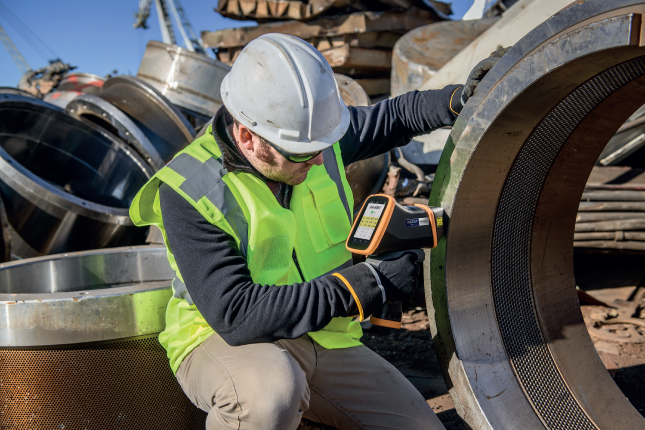You might be debating whether to invest in a LIBS versus XRF handheld analyzer for sorting your scrap. When you compare their initial cost, service life and ease of operation there doesn't appear to be a huge difference between the two. A simple trigger pull for fast and accurate results is all that’s needed.
However, did you know that a LIBS analyzer doesn’t use any X-rays? None.
With a much lower need to comply with safety regulations, ultimately LIBS analyzers are your easier and cheaper option to maximize profits. That’s not to say handheld XRF analyzers don’t have their place, they are an absolute must for many applications, but here’s why having no X-rays could benefit you:

1) Increased productivity – more money for you
Samples can be held in the hand safely when making measurements as there’s no radiation to worry about. With a 1-second analysis time, no exceptions, you can really boost productivity by being able quickly sort and check massive inventories.
2) Minimal safety legislation to comply with – a cost saving for you
In most countries you must comply with safety regulations if you buy an XRF analyzer. In the US, most states have a radiation protection program that even a small business will have to comply with.
This means registering the analyzer, appointing and training a radiation officer, and even annual inspections. All this cost, but now, these costs aren’t there for products like the Vulcan LIBS handheld analyzer from Hitachi High-Tech.
3) No radiation safety training – more savings
Because no X-rays are involved, owners of LIBS analyzers do not need to undergo radiation safety training. For companies with a high staff turnover, this training can become an on-going cost. While for smaller businesses, two or three days for training can be inconvenient and may affect productivity.
4) No punctured detectors - even more cost savings
The measurement optics in a Vulcan are recessed 10mm into the nose of the device and are protected by a window made of sapphire glass, which is nearly indestructible. No punctured detectors, no replacement fee.
5) Remember to wear your safety glasses though
The nominal ocular hazard distance (NOHD) for Vulcan series is 1.5 meters / 5 ft. So, the only safety provision we ask of you is to wear your 3B laser safety glasses. We provide a pair with each Vulcan instrument you buy from us so it’s really easy for you and your staff.